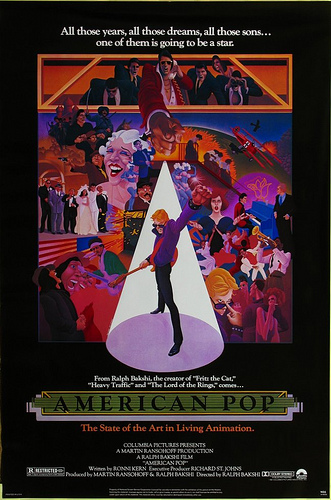 The year is 1874 and James Otis (Charles Bronson) is traveling through the Dakota Territory. Everywhere that James Otis goes, someone tries to shoot him. This is because James Otis is actually the infamous Wild Bill Hickcock and everyone this side of Deadwood has a reason to want him dead. Hickcock has returned to the territory because he is losing his eyesight and he fears that he may be dying. Hickcock has been having nightmares about a giant albino buffalo and believes that it is his destiny to either kill it or be killed himself.
The year is 1874 and James Otis (Charles Bronson) is traveling through the Dakota Territory. Everywhere that James Otis goes, someone tries to shoot him. This is because James Otis is actually the infamous Wild Bill Hickcock and everyone this side of Deadwood has a reason to want him dead. Hickcock has returned to the territory because he is losing his eyesight and he fears that he may be dying. Hickcock has been having nightmares about a giant albino buffalo and believes that it is his destiny to either kill it or be killed himself.
Meanwhile, a young indian chief (Will Sampson) is also seeking the White Buffalo. The buffalo previously attacked his village and killed his son. The chief must now get revenge or lose his power in the tribe. He is now known as Worm. Before the buffalo attack, his name was Crazy Horse.
Crazy Horse eventually teams up with Hickcock and a one-eyed hunter named Charlie Zane (Jack Warden). They work out an uneasy alliance but who, of the three, will finally get the chance to kill the buffalo?
When Dino De Laurentiis produced The White Buffalo, he was hoping to combine the popularity of Jaws with the star power of Charles Bronson. It should have been a hit but instead, The White Buffalo was one of the many flops that temporarily killed the western as a commercial genre. (Before there was Heaven’s Gate, there was The White Buffalo.) The reason why is obvious: while audiences loved to watch Bronson shoot muggers in New York, they were less willing to sit through a pseudo-intellectual western version of Moby Dick that featured more conversation than gunplay. The obviously fake buffalo did not help matters.
I still like The White Buffalo, though. Because of the movie’s cheap sets, fake snow, and some inconsistent rear projection work, The White Buffalo is sometimes so surreal that it could pass for a Spaghetti Western. (When I saw Bronson, Sampson, and Warden huddled in a cardboard cave while it fake snowed outside, I immediately thought of Sergio Corbucci’s The Great Silence.) Charles Bronson, always an underrated actor, gave one of his best performances as the haunted Hickcock. The White Buffalo was, up until his small role in Sean Penn’s The Indian Runner, the last time that Bronson would allow himself to appear as anyone other than Charles Bronson on-screen.
When watching The White Buffalo, keep an eye out for several Hollywood veterans in minor roles. Kim Novak plays a prostitute. Stuart Whitman is a thief. Slim Pickens drives a stagecoach. Clint Walker’s an outlaw and Ed Lauter plays the younger brother of Gen. Custer. The town’s undertaker is John Carradine. The cameos don’t add up too much but it’s still good to see everyone.
 Long before South Park, The Simpsons, and Pixar, there was Ralph Bakshi. At a time when animation was considered to only be good for children, Bakshi shocked audiences and critics with animated films that dealt with mature themes and were definitely meant for adults. His first two films, Fritz the Cat (1972) and Heavy Traffic (1973), was the also the first two animated films to receive an X-rating. Bakshi satirized racism in the controversial Coonskin (1975) and Bakshi’s adaptation of The Lord Of Rings (1978) beat Peter Jackson’s by 23 years. It was after the critical and commercial disappointment of the heavily flawed but interesting Lord of the Rings that Bakshi decided it was time to make a film that would be more personal to him. The end result was American Pop.
Long before South Park, The Simpsons, and Pixar, there was Ralph Bakshi. At a time when animation was considered to only be good for children, Bakshi shocked audiences and critics with animated films that dealt with mature themes and were definitely meant for adults. His first two films, Fritz the Cat (1972) and Heavy Traffic (1973), was the also the first two animated films to receive an X-rating. Bakshi satirized racism in the controversial Coonskin (1975) and Bakshi’s adaptation of The Lord Of Rings (1978) beat Peter Jackson’s by 23 years. It was after the critical and commercial disappointment of the heavily flawed but interesting Lord of the Rings that Bakshi decided it was time to make a film that would be more personal to him. The end result was American Pop.